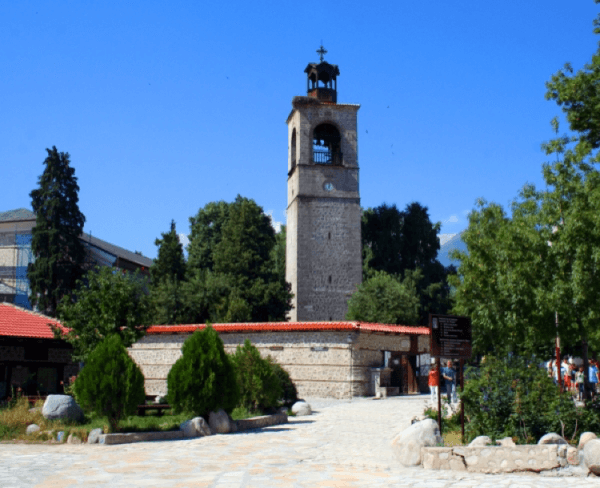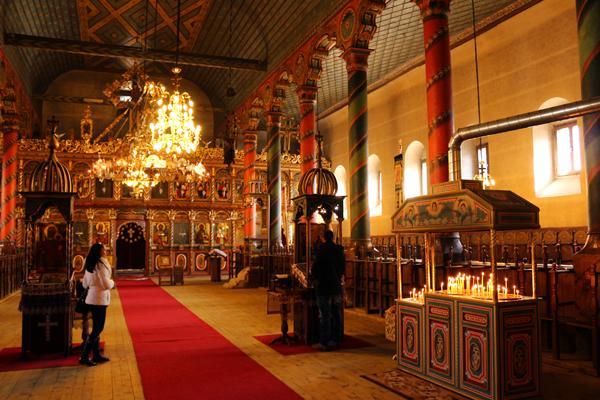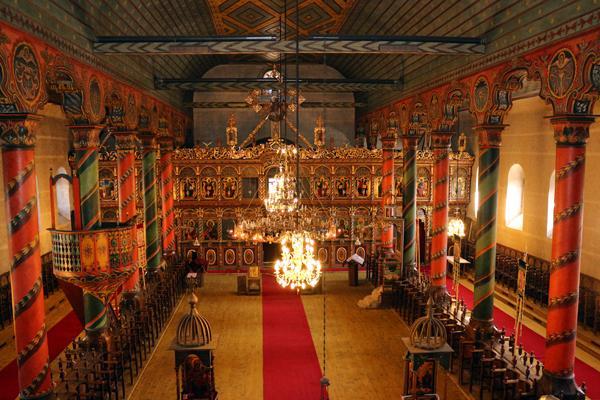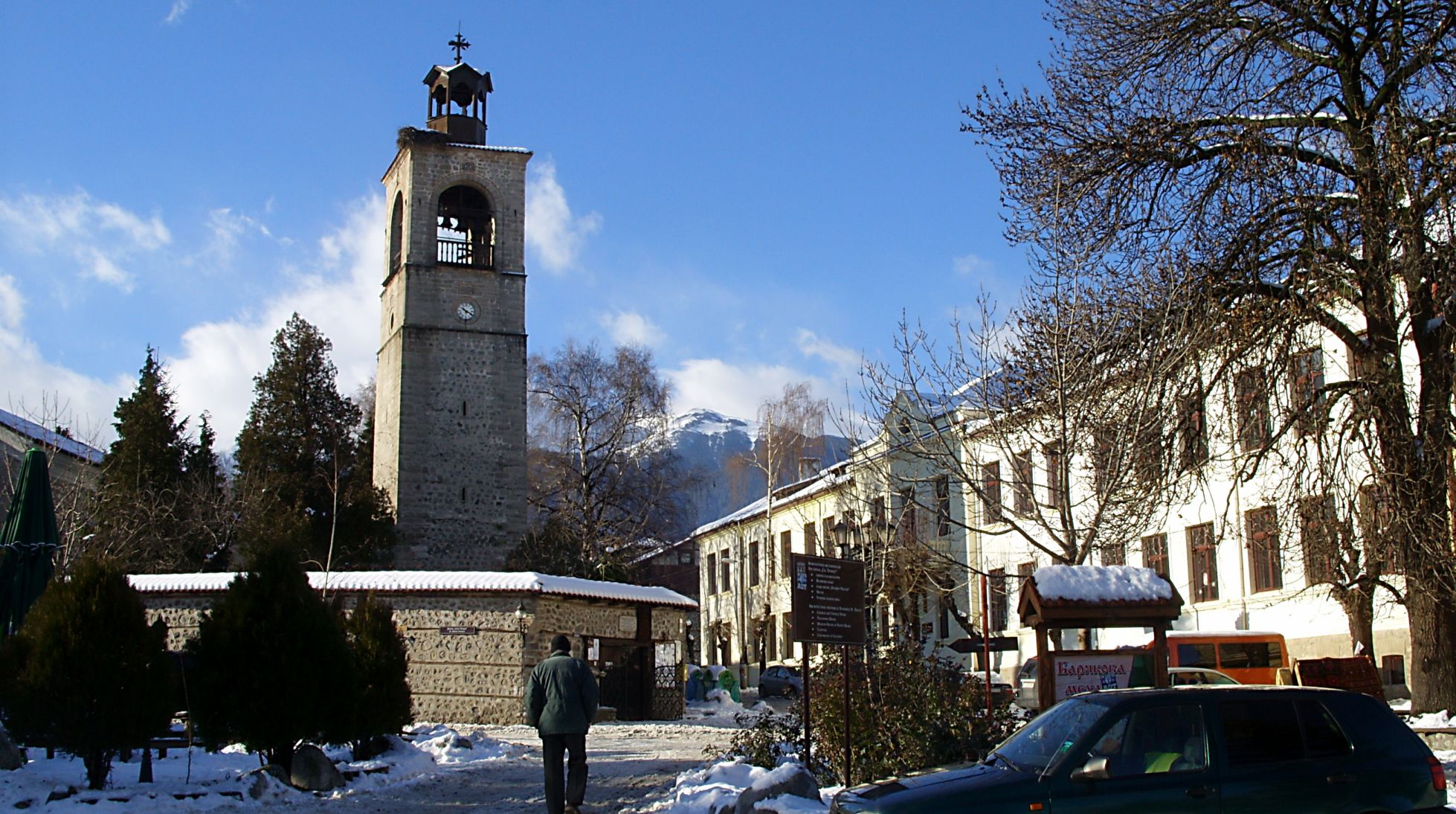The Holy Trinity Church – Bansko
Bulgaria is blessed with many beautiful church temples and monasteries, built by fearless and talented masters with great love and patience. However, there is a church that you must visit if you are near Bansko.

The church is called Holy Trinity and its history is incredible because it has everything in it – love, hatred, longing, strength, free spirit, suffering, patience and above all faith.
History
To tell the history of the Holy Trinity Church in Bansko we will go back in time to 1810. At that time, Bansko is a town in its prime, many Bansko people have become wealthy from trade, have traveled around the world and returned to their city with a wider view of life, with money in their purses and with a dream in their hearts – to have a temple, spacious and as great as the temples that they have seen in their wanderings throughout the world.
The notable people of the town headed by Dyado Lazko (Lazar German), who at that time was mayor of the town gathered and decided to build a church in the very heart of Bansko.
It’s not that there was no church in Bansko. There was another church but it was very tiny and was out of town, and the Bansko people were longing for a church to be rising from a beautiful place.
The plot of land was donated by Dyado Lazko who had a garden just in the center of the town and all the Bansko people (both poor and wealthy) donated as much money as possible to start the construction.
270 families from Bansko have donated money for the building, but work was beginning only now…
According to Turkish law, a church could only be built in a place on which there was a church building. To overcome this hurdle, Dyado Lazko used a little cunning. Together with a few comrades he slipped into the place of the future building and dug in a small icon and several church relics. Then he asked one of the elderly women in Bansko to “dream a prophetic dream” and thus find the Christian relics in order to begin the construction.
Do you think that it all ended with this? No, there were many obstacles that the people of Bansko had to overcome in order to fulfill their dream of a church.
The second step to realizing their dream was to obtain a decree to allow them to start the construction, since at that time nobody could build temples without a permission from the sultan. The people of Bansko wrote their requests, waited and waited but the permission never came. Until one day the news spread of the birth of the firstborn son of the vali of Thessalonki.
Dyado Lazko and his assistants did not waste time and immediately prepared rich gifts for the heir, a purse of gold for the vali and headed for Thessaloniki.
They brought the gifts, bowed and asked the vali to allow them to build the church and started waiting again. Impressed by the gifts and the respect of the Bansko people to his family, the influential Turk apparently took this to heart, because an “irade” (permission from the sultan) was soon received in Bansko, which allowed to start building the church.
Everything would have been wonderful if the story ended here and the people of Bansko built without a problem their temple, but no… In the permission they received, the Turkish authorities had determined the dimensions in which the church was supposed to be built and they were too small.
That’s why residents of the town had to resort to a trick again in order to skip regulations. They gathered together and decided to first surround the terrain with tall, stone walls that would prevent the Turks from seeing what was happening at the foundations. Once that was done, several nights in a row someone came in and moved the pins that marked the foundations of the church to make its area larger. So little by little Dyado Lazko and his friends managed to expand the foundations of the temple and achieve their goal.
Now they only had to start building quickly so that the Turks would not find out.
The construction of the church began in the year 1833 and everyone took part in it – the poor with work, the rich with money. Carriages were carrying materials around the clock, people worked on shifts in the building, only to finish as quickly as possible.
In 1834 despite the efforts of everyone, the money began to end and the construction of the church stopped. This made Dyado Lazko take extreme measures by going to Nevrokop and asking for 300,000 silver coins from Mehmed Bey (also called Altin Bey for his wealth).
Unfortunately, soon after he took money and work on the Holy Trinity church resumed, Dyado Lazko was detained for anonymous denunciation against him and no one heard anything from him since then.
There are several versions for the detention of Lazar German. According to one, Mehmed Bey found out what he had given his money for and ordered to have Dyado Lazko thrown in prison where he died. According to another version, an anonymous denunciation about the church’s construction caused an inspection that discovered that the Bansko people had taken money from Altin Bey. This angered the Turkish authorities, and Dyado Lazko was imprisoned, tortured and died a little later, and Mehmed Bey was long in disgrace for giving money to build a Bulgarian church in Bansko.
After the arrest of Dyado Lazko, the Turks were so angry that they were immediately ordered to tear down the church. And that could have been a reality if it was not the last foreseeing move of the unique Bansko resident Lazar German, who, knowing the Turkish temper insured himself by ordering the builders to carve at the entrance of the church besides the Christian cross also the Turkish half-moon. This actually saved the church because the Turks did not dare to touch the temple at the sight of the carved half-moon on the front of the church, and this allowed the Bansko people to finish the construction.
After many vicissitudes of fortune, finally, in 1835, the Holy Trinity church was consecrated and opened doors for its first worshipers. 15 years later, the Bansko people began building the tower, and in 1855 the Veleganovi brothers found 4 bells for it.
Architecture and interior
The Holy Trinity church is a no-dome building with a nave and two aisles and together with the tower to it, the open spaces and the tall stone wall it forms an impressive architectural complex.
Interestingly, despite the impressive real size of the temple – 44 meters long, 24 meters wide and a 20 meters high vault arch, it is built in order to deceive the eye and look smaller.
The brickwork outside is made of stone and has a wall thickness of 1.10 meters, and the roof is carried by 12 columns that most likely symbolize the disciples of Christ. Doors and windows vaults are made of cut stones and the walls are made of white marble blocks.
The first thing that makes an impression as soon as the threshold of the church is crossed are the unique frescoes that tell their stories. The ceiling of the temple, which is the work of Velyan Ognev (a painter from the Debar Art School), is painted as a starry sky where stars are shimmering and angels are floating over the earth to care for us and watch over us.
Master Ognyan Velev is also a master of the unique carvings of the iconostasis and of the decorative elements in the church, and the icons of the iconostasis are made by Dimitar and Simeon Molerovi whose father is the founder of the Bansko Art School.
The pulpit which is painted with stylized drawings, has extremely impressive and a spiral staircase leads us to it.
The church has three entrances, the icon of the Holy Trinity is painted over the main entrance, and in a few places the Turkish symbols (half-moons) that saved the temple from destruction can be seen.
As we mentioned a little earlier, several years after the Orthodox Church was built near it, the Bansko people built a tower, which today is one of the symbols of the city.
The tower rises 30 meters and is a quadrilateral building with four open arches on the top. Below the dome are the four bells that were found by the Veleganovi brothers and which have Turkish symbols again so as not to be removed by the Turks.
In the tower there is a clock made by the famous Bansko master Todor Hadji Radonov which still shows the time to the Bansko people and the guests of the town.
Useful information
The Holy Trinity church is located in the heart of the town and is one of its symbols.
The temple complex (the church, the tower and the high walls) are declared an architectural and construction monument of national importance.
The complex is open for sightseeing every day from 8:00 AM to 6:00 PM.
How to get there?
The church is located in the central part of Bansko and you cannot miss it, but if you trust more the navigation, you can enter the following address: Vazrazhdane square.
If you are a guest at the Lucky Bansko hotel, it takes only 6 minutes to reach the temple complex by car, and if you decide to walk –15 minutes (or you have to walk about 1.2 km from the hotel to the temple).
Why visit the Holy Trinity church?
There are many temples in Bulgaria and they all have an interesting history and architecture, but the Holy Trinity is a church that embodies the dreams and wishes of a whole town. The desire of all Bansko people to have their own place to pray has made it possible to overcome all obstacles and build up their church in the very center of the town. It made it possible to build it as they have seen in their dreams.
Everyone who visits Bansko must take the time to look at the temple complex because the Holy Trinity Church is one of the greatest Bulgarian relics that gave, give and will continue give hope to all of us.


